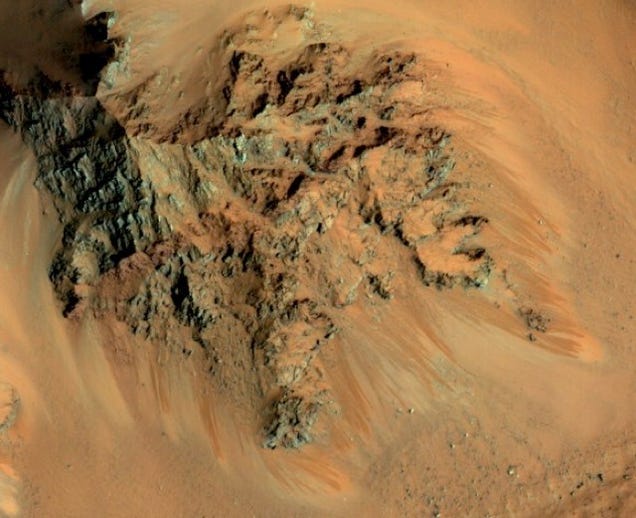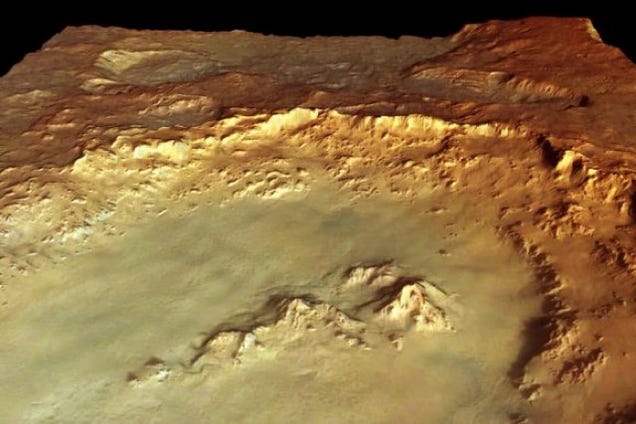Using radar measurements from NASA’s Mars Reconnaissance Orbiter, researchers have been able to determine that belts of glaciers, making up 150 Billion cubic meters of water ice, encircle the Red Planet.
Scientists at the University of Copenhagen have used radar observations spanning ten years to determine how thick the glacier formations are. Nanna Bjørnholt Karlsson of the Centre for Ice and Climate at the Niels Bohr Institute there explained that previous data listed thousands of glacier-like formations on the planet, but that data didn’t indicate how much ice there was.

“We have looked at radar measurements spanning ten years back in time to see how thick the ice is and how it behaves. A glacier is after all a big chunk of ice and it flows and gets a form that tells us something about how soft it is. We then compared this with how glaciers on Earth behave and from that we have been able to make models for the ice flow," Bjørnholt Karlsson told Phys.org.



This Mountain On Mars Is Leaking
As the midsummer Sun beats down on the southern mountains of Mars, bringing daytime temperatures soaring up to a balmy 25ºC (77ºF), some of their slopes become darkened with long, rusty stains that may be the result of water seeping out from just below the surface.
Seasonal flows spotted by HiRISE on northwestern slopes in Hale Crater. (NASA/JPL/University of Arizona)
As the midsummer Sun beats down on the southern mountains of Mars, bringing daytime temperatures soaring up to a balmy 25ºC (77ºF), some of their slopes become darkened with long, rusty stains that may be the result of water seeping out from just below the surface.

Seasonal flows spotted by HiRISE on northwestern slopes in Hale Crater. (NASA/JPL/University of Arizona)
The image above, captured by the HiRISE camera aboard NASA’s Mars Reconnaissance Orbiteron Feb. 20, shows mountain peaks within the 150-km (93-mile) -wide Hale Crater. Made from data acquired in visible and near infrared wavelengths the long stains are very evident, running down steep slopes below the rocky cliffs.

These dark lines, called recurring slope lineae (RSL) by planetary scientists, are some of the best visual evidence we have of liquid water existing on Mars today – although if RSL are the result of water it’s nothing you’d want to fill your astro-canteen with; based on the first appearances of these features in early Martian spring any water responsible for them would have to be extremely high in salt content.
According to HiRISE Principal Investigator Alfred McEwen “[t]he RSL in Hale have an unusually “reddish” color compared to most RSL, perhaps due to oxidized iron compounds, like rust.”
Source:
http://io9.com/this-mountain-on-mars-is-leaking-1697343091
http://sputniknews.com/science/20150407/1020592669.html#ixzz3WgnI5p4r
DAHBOO77
No comments:
Post a Comment